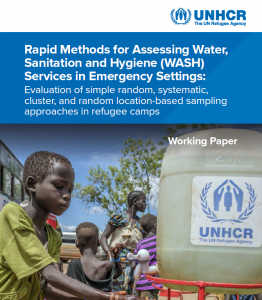 |
Rapid Methods for Assessing Water, Sanitation and Hygiene (WASH) Services in Emergency Settings (UNHCR, 2017b)Publisher: UNHCR Year: 2017 Description: This document evaluates various sampling strategies that can be used during the emergency phase to estimate the status of WASH services in refugee camps or settlements. The working paper presents the results of statistical analyses carried out on real data from Ethiopia. The objective of the study was to evaluate […]
|
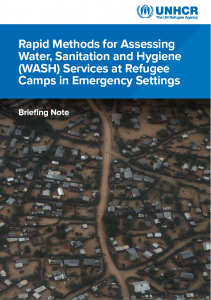 |
Rapid Methods for Assessing Water, Sanitation and Hygiene (WASH) Services in Emergency Settings (UNHCR, 2017a)This document describes UNHCR’s methodology for conducting rapid WASH household assessments in refugee settings.
|
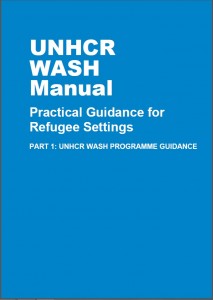 |
UNHCR WASH MANUAL Part 1: Programme GuidanceThe UNHCR WASH Manual Part 1: Programme Guidance, provides practical guidance for WASH programmes in refugee settings.
|
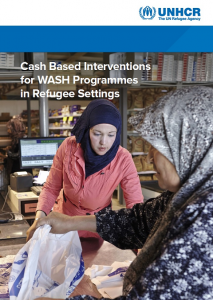 |
Cash Based Interventions for WASH Programmes in Refugee Settings (UNHCR, 2016)This report is based on a desk-based review of secondary data, comprising published material as well as grey literature, supplemented with key informant interviews for programmes that lacked documentation. Section One summarises the current use of CBI in WASH programming. Section Two summarises the best practices and lessons learned including challenges faced, drawing on evidence from the project examples found. Section Three provides recommendations and best practice guidance for use of CBI in refugee settings. Section Four details existing tools and guidance.
|
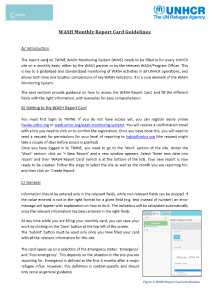 |
UNHCR WASH Monthly Report Card Guidelines (UNHCR, 2016)This document provides guidance on how to access the WASH Report Card within TWINE, and fill in the different fields with the right information, with examples for easy comprehension.
|
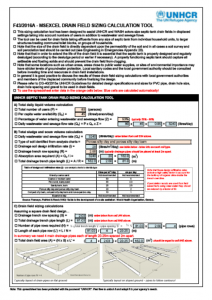 |
F-402/2016a Drain Field Sizing Spreadsheet (UNHCR, 2016)This sizing calculation tool has been designed to assist UNHCR and WASH actors correctly size drain fields for septic tanks in displaced settings taking into account numbers of users, soil type, and wastewater and sewage flows.
|
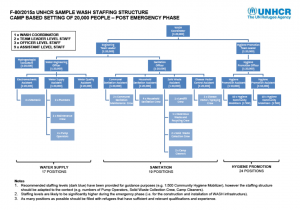 |
F-800/2015a Sample WASH Staffing Structure for Post Emergency Camp Setting (UNHCR, 2015)A sample organigram for running a typical refugee WASH programme for 20,000 people in a post emergency camp based setting. The organigram gives an indication of how the WASH Team should be structured in addition to the tentative number of Coordinators, Team Leaders, Officer, and Assistant level staff that should be recruited.
|
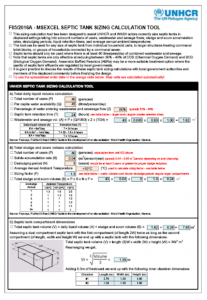 |
F-401/2016a Septic Tank Sizing Spreadsheet (UNHCR, 2016)This sizing calculation tool has been designed to assist UNHCR and WASH actors correctly size septic tanks in displaced settings taking into account numbers of users, wastewater and sewage flows, sludge and scum accumulation rates, desludging periods, liquid retention times, and average annual ambient temperatures.
|
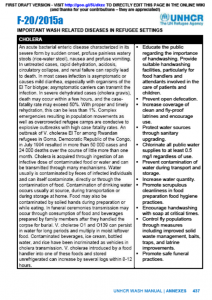 |
F-200/2015a Summary of Important WASH Diseases in Refugee Settings (UNHCR, 2015)This document provides a quick summary of the most important WASH related diseases for refugee settings and includes a list of recommended control strategies.
|
 English
English